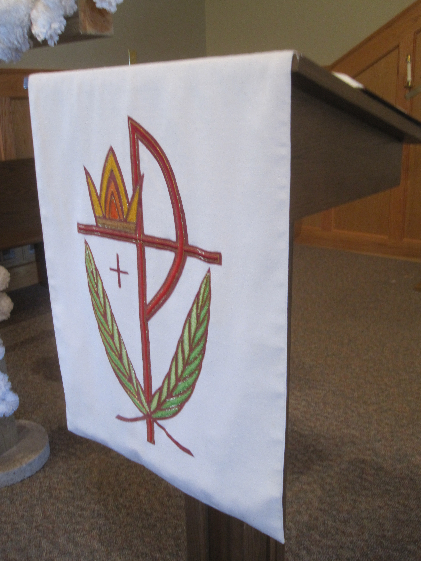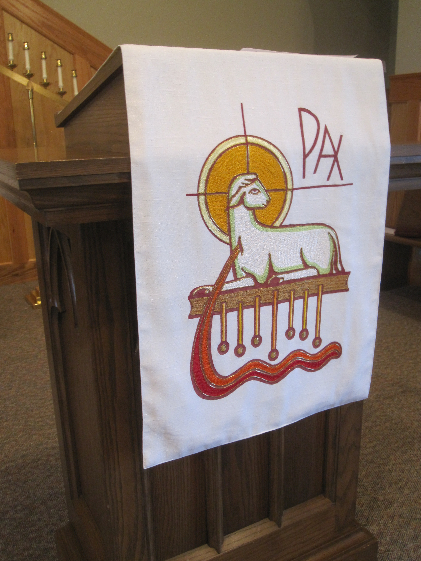
Prince of Peace Lutheran Church
What to Expect
Liturgical Worship
Prince of Peace is a "liturgical" church which means that our worship is patterned after the historic liturgy of the Church. We worship this way because it's biblical, it is Christ-centered, it helps us to show awe and reverence for God, and our liturgy connects us to Christians all over the world and throughout history.

When you examine the Divine Service as laid out in our hymnal or worship bulletin, you will notice that much of what is sung or said contain direct quotations of Scripture. Our church fathers understood that Bible passages would be memorized if they were said over and over again, so every week we repeat many of these important Bible passages during the Divine Service.
The Colors and Seasons of the Church Year

Our worship during the church year is shaped by the church calendar, a rich tradition which is based on the life of Jesus Christ. In addition, everything in the Sanctuary at Prince of Peace is designed to help us worship and remember the teachings of the Bible. You will notice colors displayed on banners and around the altar area and worn by the Pastor and acolytes. The calendar and colors emphasize different aspects of Christian life.
The Church Year begins in December, with the Season of Advent. During this season, we prepare our hearts for the coming of Jesus Christ to earth in human form. Blue is the color of Advent. It is the color of the sky and helps convey the powerful message that our Christian faith rests on the hope that Christ, who came in history assuming our flesh, will also return on the last day of time from that same blue sky to which he ascended long ago.

During the Christmas season (December 25th and following for twelve days), we celebrate the birth of Jesus with the surprising news that God took on flesh to save His people from their sins. The color white is used and signifies purity and completeness.
Epiphany follows the Christmas season, with its message of Christ's revelation to the Gentiles (non-Jews), along with the emphasis on extending Christ's kingdom through missions. The use of the color green during Epiphany symbolizes growth.
The next season is Lent , and we are led with Jesus to the cross where He will die for the sins of the world. Purple is used to represent somberness, solemnity, penitence and prayer. Ash Wednesday and Good Friday are the "bookends" of the Lenten season and the color black is used only on these two days. As the color black signifies the absence of light, so black also reminds us of the sacrificial death of Christ, the "light of the world."

On Easter Sunday we celebrate Jesus' resurrection glory. Forty days later, we celebrate His Ascension into heaven. White is the color for this season as we celebrate Christ's triumph over death.
Pentecost, fifty days after Easter, begins the season of Pentecost, in which we celebrate the gift of the Holy Spirit that our risen Lord sends to His disciples.
Red is the color on the Day of Pentecost. Then green becomes the the color for the rest of the season of Pentecost and reminds us of growth, and our need to grow and mature in our knowledge of Jesus.